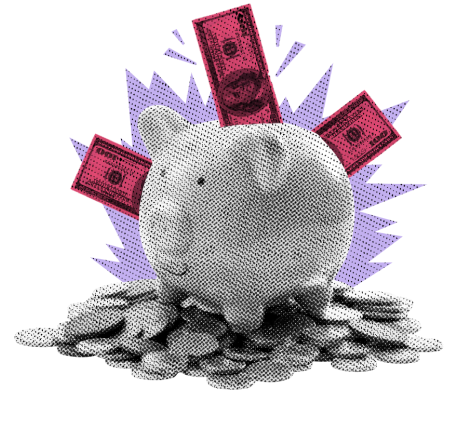Stocks fell on Friday after the Producer Price Index / PPI gained more than expected leaving investors with fears that the Fed will react with malice. Consumers are more confident than expected and they have eased, slightly, their expectation for inflation in 2023, according to the latest survey by University of Michigan.
Play Ball! Really? December? All this stress in the markets is more suitable for spring or mid-summer where it takes a whole lot more to upset investors. Not during the holidays after a miserable year for investments of all types. Unfortunately, as I often muse, the market rarely does what is convenient for investors. We have dealt with rampant inflation in the goods markets, an unprecedented, aggressively, negative Fed, and now the threat of a hard-landing recession. If you haven’t tried eggnog in your life, I am betting that this may be the year to give it a go. Ok, I am not telling you anything that you don’t know already. This is a big week.
The Fed is set to meet tomorrow and Wednesday, after which it will release its interest rate policy. It is the last FOMC meeting of 2022 which was marked by rate-hikes not seen in decades. Tuesday, as the committee meets, we will get the final Consumer Price Index / CPI release of the year. Though many members have surely made up their minds already, they will certainly pay attention to the last-minute indicator, especially given last Friday’s hotter-than-expected Producer Price Index / PPI release. The PPI showed that factory gate prices in the services sector grew faster than expected in November. This is in sharp contrast to the inflation we have witnessed in 2021 and 2022 in the goods sector. Now, folks are pulling back on buying things and supply chains are beginning to ease up. But it appears that those dollars saved on goods are being piled into services. Have you checked airline ticket prices or hotel rates lately? Movie tickets, dining out, dry cleaners, hair styling (don’t think I didn’t notice, E.) have all crept higher in price. Hotels are still struggling to hire enough workers and they are likely having to pay higher wages which means that YOU are paying the price.
All this is worrisome for the Fed… and the markets. The Fed has sent a fairly strong message that it is likely to raise interest rates by only +50 basis points this week and markets, according to futures, are expecting as much. What is going to be newsworthy this week will be what Fed Chair Powell says in his presser and what the updated dot plot looks like. According to Fed Funds futures, rates are expected to top out at around 5% sometime around late Spring, early summer of next year. The dot plot, however, only shows where FOMC members expect rates to be at the end of 2023, so it will be hard to determine what kinds of zany adventures the bankers are likely to go on between January and December of next year. However, there is a chance that those rate expectations for the end of the year may be revised upward, signaling higher rates for longer, given the recent resilience in the services inflation and the labor market. If that is the case, not only will high-yield-allergic growth investors get stressed but also the broader markets, as higher rates for longer increase the possibility of a recession… a hard landing.
The market is already grappling with the very real possibility of a recession sometime next year. If the Fed remains unmoved by the contraction, things can get acutely painful for investors. The bond markets have already weighed in it has signaled a high expectation for a recession next year, based on the inverted yield curve. I talk often about the yield spread between 2-Year Treasury Notes and 10-Year Treasury notes, which has been negative since early July. That part of the yield curve is the one most commonly watched and quoted in the media, but some economists prefer to look at the yield curve between 3-Month Treasury Bills and 10-Year Treasury Notes. The Fed actually did research on that spread and found it to be the most reliable indicator of a recession around 12 months after the inversion. You can have a look for yourself in the chart below. The 3-month/10-year yield curve inverted in earnest at the beginning of November. If the clock started ticking at that point, the Fed will have a few more quarters to get its last licks in before it may be forced to lower rates once again.

WHAT’S SHAKIN’
QAULCOMM Inc (QCOM) shares are lower in the premarket after receiving a rating downgrade to a SELL by Wells Fargo. This represents the stock’s only SELL rating and the analyst cited weak smartphone sales expectations as the driver for the downgrade. The company’s next earnings release will not be until 2/2/23. Dividend yield: 2.52%. Potential average analyst target upside: +27.5%.
Amgen Inc (AMGN) shares are lower by -3.06% in the premarket after it announced that it will acquire Horizon Therapeutics for $116.50 per share. That represents a +48% premium over the stock’s price when it announced that it was in talks to be acquired on November 29th. Dividend yield: 2.79%. Potential average analyst target upside: -6.0%. WHY IS THIS NUMBER NEGATIVE? Because the company’s stock price is trading above the 12-month average analyst target. While this may be interpreted as the stock being expensive, it does not mean that the stock cannot continue to climb.
FRIDAY’S MARKETS
Stocks fell on Friday in response to a hotter than expected Producer Price Index / PPI release. The S&P500 lost -0.74%, the Dow Jones Industrial Average fell by -0.90%, the Nasdaq Composite Index traded lower by -0.70%, and the Russell 2000 Index dropped by -1.19%. Bonds declined and 10-year Treasury Note yields climbed by +9 basis points to 3.57%. Cryptos traded off by -0.96% and Bitcoin -0.41%.
NEXT UP
- The Treasury will auction bills, 3-year Notes, and 10-year Notes today.
- Upcoming this week: Consumer Price Index / CPI, Retail Sales, Industrial Production, flash PMIs, and the FOMC meeting on Wednesday. Please refer to the attached economic calendar for details.
- After the closing bell earnings: Fluence Energy, Inotiv, and Oracle.
.png)

